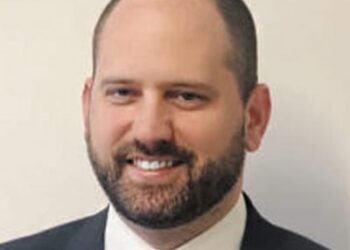This is a strategy that will not apply to everyone, as there are a few things that must line up before the deduction is available. However, if appropriate, this can be a powerful and valuable strategy, particularly for Gen Xers and Millennials who have started a family and/or have a mortgage. Again, this is the demographic ATO statistics show are the ones establishing the majority of SMSFs.
As an alternative to claiming death or disability insurance premiums, a fund can claim a tax deduction for the future liability to pay death and disability benefits in the year that the death or disability benefit payment occurred.
How does this work?
Rather than claiming the tax deduction for the insurance premiums in the relevant financial year, the SMSF instead claims a deduction for the bring-forward of future years’ deductions on premiums that would have been paid providing insurance cover to the member up to retirement age (in the case of this strategy, retirement age is considered 65).
This deduction can apply to a death benefit, terminal illness benefit, disability superannuation benefit or a temporary incapacity income stream payment.
The key benefit of this strategy is the tax deduction claimed for the future liability can be quite a large amount (depending on how far away the member is from age 65). The deduction created with this strategy may be greater than the deductions available for any future insurance premiums.
If the deduction available is substantial, the amount the fund does not use in the financial year can be carried forward to future financial years for the benefit of other members of the fund in accumulation phase; to offset tax payable on assessable fund income and concessional contributions.
Again, a great strategy for this demographic, as it allows spouses and children to use the deduction for their benefit.
However, once the Trustee elects to claim a tax deduction for the future liability benefit, it cannot in future years claim insurance premiums for other members of the fund. That is the main reason it is a strategy that only applies to SMSFs.
The formula for the future liability deduction is calculated as follows:
Deduction = benefit amount x future service days/total service days.
Where:
- Benefit amount = Is the total benefit.
- Future service days = is the number of days from the date of termination to the member’s last retirement day (age 65).
- Total service days = is the sum of future service days plus the member’s eligible service period to the day of termination.
Let us have a look at a case study to help explain the concept.
Case study
Con is married to Bonnie and has been a member of his fund since 30 June 1999 (or has an ESP of 30 June 1999).
His DOB is 1 July 1976.
The fund also owns a life insurance policy on Con’s life for $1 million with an annual premium of $3,600.
His balance in the fund at the time of his death on 1 July 2024 at age 48 is $500,000.
Bonnie is to receive a death benefit lump sum which will be paid in the 2024–25 financial year.
The calculation, if using the future liability deduction, is as follows:
- Benefit amount = $1,500,000
- Future service days = 6,210
- Total service days = 15,343
- The future liability tax deduction = $1,500,000 x (6,210/15,343) = $607,157 tax deduction
Let us assume the fund has assessable income in 2024–25 as follows:
- Concessional contributions $27,500
- Interest income $10,000
- Rental income $22,000
- Dividend income $10,500
- Total $70,000
The tax deduction ($607,157) offsets the assessable income ($70,000) with the remainder ($607,157 – $70,000 = $537,157) carried forward to be used to offset the assessable income of the fund in future years.
As mentioned previously, however, there are some issues for consideration:
- The fund really needs to be in accumulation mode for the strategy to work.
- If the fund is in pension mode, the carry-forward loss is offset against exempt current pension income (ECPI).
- For example, if a fund earns $100,000 whilst in pension mode, it is exempt from tax.
- However, the $100,000 exempt earnings would be offset against any carry-forward deduction created by the future liability deduction.
Sandy could utilise the SMSF for concessional contributions – now and into the future and offset the 15 per cent contributions tax. New members, such as children, could also come into the SMSF and utilise the deduction to offset their concessional contributions. However, if Sandy wanted to commence an income stream, she would be best placed utilising a second fund (due to the ECPI reasons mentioned previously). If Sandy or other SMSF members wanted policies of insurance, they would need to utilise another fund, as the election to use the future liability deduction precludes the fund from claiming a deduction on any future policy of insurance.
Conclusion
Of course, any strategy needs to consider the specific situation of each fund member, and the future service deduction may not be applicable in certain circumstances. Notwithstanding that fact, for an SMSF that is successful in claiming the Future Service alternate, it opens some great planning opportunities for those who remain and for future generations – a legacy of the Generation X or Millennial member who passed away.


